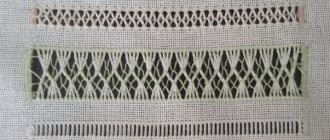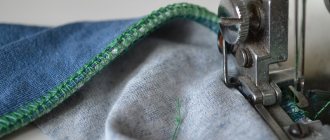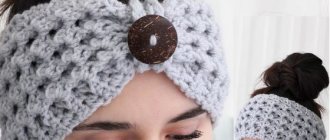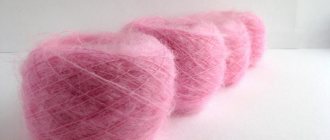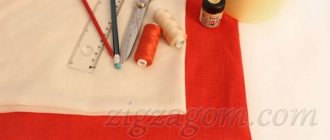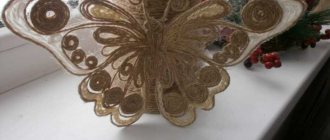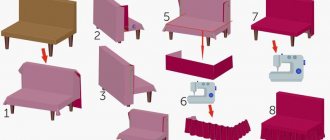The structure of the fur of a dog's skin
The importance of regular and proper dog care is undeniable. Regular care plays a significant role in maintaining a pet, but it is not perceived as a duty. Even if you spend a few minutes a day caring for your pet, positive results will not be long in coming, which will have a beneficial effect not only on the health and well-being of your dog, but will also bring you a lot of pleasure.
The most common mistake among most dog owners is that by letting the development and upbringing of their pet take its course, they themselves contribute to the formation of “bad” habits, the harmful effects of which extend not only to the condition of the dog’s coat and health, but also to behavior. Therefore, I sincerely hope that the care recommendations presented in the book will allow you to avoid common mistakes that are easy to make when deciding to keep a pet without prior preparation. It’s hard to disagree with the fact that communicating with a healthy and well-mannered pet can bring a lot of joy and positive emotions into your life, and they are often the main reasons why people get pets. In general, the process of keeping pets is in many ways similar to raising children, therefore, in order to receive joy from communicating with a pet, you need to invest a lot of time and effort in raising and caring for it from birth, and only in this case can you hope for a positive result . And no other way!
Wool structure
Dog fur is made up of flexible, elastic fibers. Animal hair fibers are horny derivatives of skin. Dogs' coats vary in length, diameter and texture, as well as shape (depending on the breed, the coat can be straight, wavy or curly). Each individual dog hair is made of keratin, a flexible, fibrous protein that is found in another form in animal claws and whiskers. All individual coat hairs grow from follicles located throughout the dog's body in the outer layer of skin. With the exception of a few productive cells growing at the root, the tissue of the hair shaft, that is, the part that protrudes above the surface of the skin, is dead and consists of keratin and other related proteins.
- Each hair follicle is in constant cyclical development, consisting of three main stages. The first stage of hair development is called anagen (growth phase), during which new hair develops in the hair follicle. The bulb is a small thickening consisting of cells that, dividing intensively, form hair. On average, this stage of “maturation” of new hair takes approximately 100 days, but in dog breeds with very long hair it can last up to 550 days.
- After this, the follicle enters the catagen stage (an intermediate stage or regression phase in the hair development cycle). This stage occurs when the hair has mostly grown, after which the follicle enters the resting stage, and the hair follicle, which has fulfilled its function, begins to gradually collapse. ? Finally, the telogen stage (the resting phase of the hair development cycle) occurs, when the dead hair is held in place by only a few remaining horny scales. At this stage, the hair root becomes strongly compressed, acquiring a cone-shaped shape and ultimately falls out. After this, new hair begins to “ripen” in the same follicle, the development and growth cycle of which passes through all three described stages, starting with anagen.
- To begin with, according to the type of coat, all dogs can be divided into two large groups, depending on whether they shed or not. The coat of most dogs is subject to regular shedding, which occurs under the influence of seasonal changes in weather conditions, for example when a dog sheds its thick, dense “winter” coat before the onset of warm summer, and, conversely, such coat is found in dogs of most breeds. The length of the coat of this type usually varies from short to medium. The second group includes dogs whose hair grows constantly, for example poodles, Afghan hounds, Maltese dogs, etc. The cycle of coat development in dogs of this group is very similar to the process of hair growth in humans. However, such dogs still shed their hair if it is not trimmed on time. The hair grows excessively, as a result of which the fragile hair shafts cannot withstand the increased load and fall out. The shedding of long-haired breeds is less noticeable, since, according to the data above, their anagen stage on average lasts much longer than other dogs.
Wool: what functions does it perform?
Wool is primarily intended to protect animals from the adverse effects of the environment. For example, thick fur protects dogs from hypothermia. Thus, the very thick and dense two-layer coat of Samoyed dogs protects them from hypothermia in harsh living conditions. An insulating air layer is formed between the two layers of huskies' fur, preventing cold air from penetrating into the undercoat, due to which the dog's body temperature remains normal. Thanks to this protective layer of air, huskies not only avoid hypothermia in winter, but also overheating in hot weather in summer. Some dog breeds, such as Pharaoh Hounds, have incredibly fine coats. This type of wool is designed to protect animals from the harmful effects of very high temperatures and scorching sun.
Nature has also endowed all retrievers and water dogs with a special coat: the thick outer layer of their coat repels water due to the presence of a natural fatty film of sebum. Thanks to the water-repellent properties of their coat, these dogs never get wet while swimming in the water.
In addition, the protective air layer that forms between the dense undercoat and the thick outer layer of the dog's coat acts as reliable insulation, helping to maintain normal body temperature even when in bodies of water with very low temperatures. Undoubtedly, the types of animal fur in nature are extremely diverse. You may ask, why do domestic dogs who live in houses with running water and central heating need such diversity? The thing is that dogs as a species originally developed in the wild, so the type of coat they have primarily depends on the original habitat in which this breed arose and developed, adapting to external weather and climatic conditions. Thus, nature itself miraculously “gifted” dogs with various types of coat and color, most suitable for survival in a particular habitat, originally intended to protect the dog from extreme climatic conditions and adverse external influences to which they were exposed.
Skin: what functions does it perform?
In a nutshell, skin is the natural covering of the body of all living things, protecting underlying tissues and internal organs. In fact, the skin is the largest organ of the body of all mammals. The skin also contains a large number of nerve endings (receptors), through which dogs receive information about the world around them, for example, they recognize the temperature, the outlines of objects they come into contact with, etc.
Skin receptors react to touch and pain, thanks to which the animal can be warned in time about danger, for example, in contact with sharp objects, etc. The skin consists of three layers, the main building material for which are the same keratin cells. The top outer layer of skin is called the "epidermis". This dense layer of skin is made up of keratinized keratin cells that serve to protect against water and contaminants from entering the body's internal tissues. Also, the epidermis is perhaps the most biologically active layer of the skin, since the process of exfoliation and cell regeneration constantly occurs in it - dead cells are exfoliated from the surface of the skin and are replaced by new cells that are continuously formed in the lower layer of the dermis. New cells rise up from the dermis through special papillae and form a new layer of epidermis. The process of constant cell regeneration serves to maintain the skin in an ideal healthy state, and also ensures its continuous restoration for rapid healing of wounds. On average, the process of regeneration and replacement of dead epidermal cells with new ones takes about 20 days.
Beneath the outer layer of skin is the dermis. The dermis is a flexible, elastic layer of skin in which hair follicles form and hair roots develop before they grow outward. In dogs, hair does not grow individually, as in humans, but in whole bunches through one hole in the skin. In this case, one of the hairs in the bun is often thicker and longer than the rest, and is called the guard hair. The rest of the hair in the bun is shorter and softer in comparison.
The size of individual tufts may vary depending on the dog's coat type. The dermis consists of connective tissue, as well as elastic collagen fibers, which give the skin firmness and elasticity. Also in this layer of skin are nerve endings (receptors) and muscles that raise the hair, thanks to which the dog can react to touch and pain. The muscles that raise the hair also serve to show the dog's reaction when communicating with its relatives: when excited, the dog's hair can stand on end to make the body appear larger, and if aggression is necessary, the hair can rise on the scruff of the neck and back in order to warn the enemy. Beneath the dermis is subcutaneous fat, which is essentially a protective subcutaneous layer of fat.
I would like to note that blood vessels and nerve endings are found only in the dermis and subcutaneous fat. In addition to the skin itself, the dog’s body is also protected from negative external influences by thick, long guard hairs sprouting from it, as well as shorter and softer downy hairs of the undercoat, which provide good thermal insulation and maintain normal body temperature even at very low ambient temperatures. Sebum (sebum), formed in the sebaceous glands located in the dermis, provides shine to the dog's coat, as well as reliable protection from getting wet. In addition, sebum performs an important protective function in the body by destroying bacteria on the surface of the dog's skin.
About sexual selection and parasites
According to one version, in addition to a person’s desire to have a more advanced cooling system for the body, relations between the sexes also played a large role in the process of hair loss. The fact is that the young of many animals are born naked. Noticing this, ancient men sought to choose hairless women as wives. Apparently, such ladies aroused in them irresistible impulses to take care of them, protect them and feel sorry for them, like their offspring.
Some scientists suggest that the loss of fur was also caused by proliferating parasites: lice and other insects. They really annoyed people, and it is much easier to catch a small insect on bare skin than in thick skin.
